Elena Simona Lohan
A Collaborative Approach Using Neural Networks for BLE-RSS Lateration-Based Indoor Positioning
May 21, 2022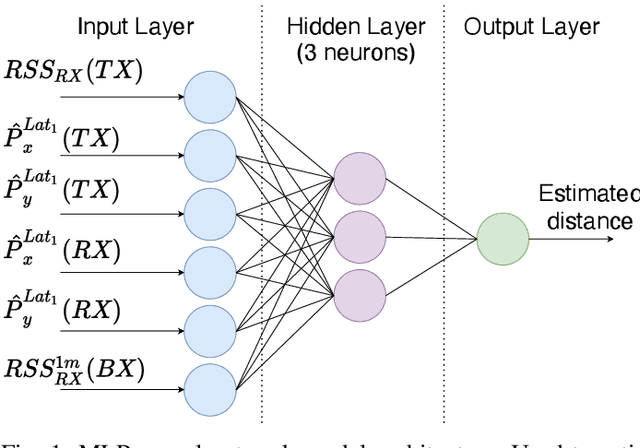
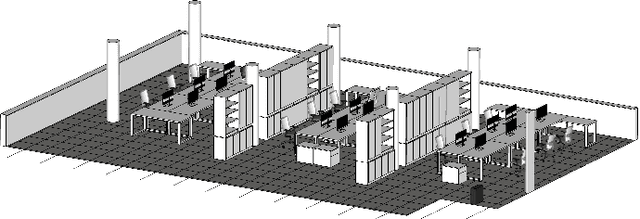
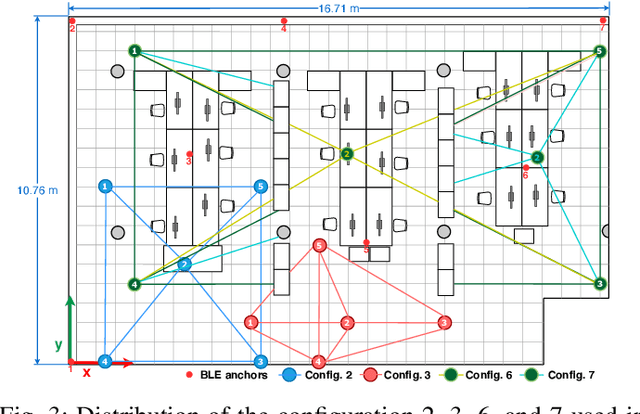
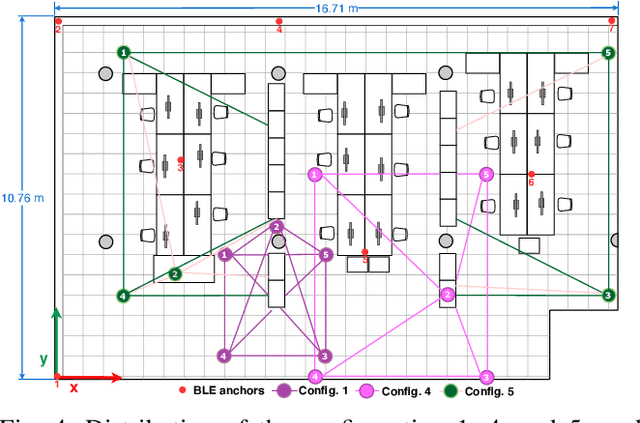
Abstract:In daily life, mobile and wearable devices with high computing power, together with anchors deployed in indoor environments, form a common solution for the increasing demands for indoor location-based services. Within the technologies and methods currently in use for indoor localization, the approaches that rely on Bluetooth Low Energy (BLE) anchors, Received Signal Strength (RSS), and lateration are among the most popular, mainly because of their cheap and easy deployment and accessible infrastructure by a variety of devices. Nevertheless, such BLE- and RSS-based indoor positioning systems are prone to inaccuracies, mostly due to signal fluctuations, poor quantity of anchors deployed in the environment, and/or inappropriate anchor distributions, as well as mobile device hardware variability. In this paper, we address these issues by using a collaborative indoor positioning approach, which exploits neighboring devices as additional anchors in an extended positioning network. The collaborating devices' information (i.e., estimated positions and BLE-RSS) is processed using a multilayer perceptron (MLP) neural network by taking into account the device specificity in order to estimate the relative distances. After this, the lateration is applied to collaboratively estimate the device position. Finally, the stand-alone and collaborative position estimates are combined, providing the final position estimate for each device. The experimental results demonstrate that the proposed collaborative approach outperforms the stand-alone lateration method in terms of positioning accuracy.
Data Cleansing for Indoor Positioning Wi-Fi Fingerprinting Datasets
May 04, 2022



Abstract:Wearable and IoT devices requiring positioning and localisation services grow in number exponentially every year. This rapid growth also produces millions of data entries that need to be pre-processed prior to being used in any indoor positioning system to ensure the data quality and provide a high Quality of Service (QoS) to the end-user. In this paper, we offer a novel and straightforward data cleansing algorithm for WLAN fingerprinting radio maps. This algorithm is based on the correlation among fingerprints using the Received Signal Strength (RSS) values and the Access Points (APs)'s identifier. We use those to compute the correlation among all samples in the dataset and remove fingerprints with low level of correlation from the dataset. We evaluated the proposed method on 14 independent publicly-available datasets. As a result, an average of 14% of fingerprints were removed from the datasets. The 2D positioning error was reduced by 2.7% and 3D positioning error by 5.3% with a slight increase in the floor hit rate by 1.2% on average. Consequently, the average speed of position prediction was also increased by 14%.
Towards Accelerated Localization Performance Across Indoor Positioning Datasets
Apr 22, 2022



Abstract:The localization speed and accuracy in the indoor scenario can greatly impact the Quality of Experience of the user. While many individual machine learning models can achieve comparable positioning performance, their prediction mechanisms offer different complexity to the system. In this work, we propose a fingerprinting positioning method for multi-building and multi-floor deployments, composed of a cascade of three models for building classification, floor classification, and 2D localization regression. We conduct an exhaustive search for the optimally performing one in each step of the cascade while validating on 14 different openly available datasets. As a result, we bring forward the best-performing combination of models in terms of overall positioning accuracy and processing speed and evaluate on independent sets of samples. We reduce the mean prediction time by 71% while achieving comparable positioning performance across all considered datasets. Moreover, in case of voluminous training dataset, the prediction time is reduced down to 1% of the benchmark's.
Improved Sensing and Positioning via 5G and mmWave radar for Airport Surveillance
Feb 28, 2022
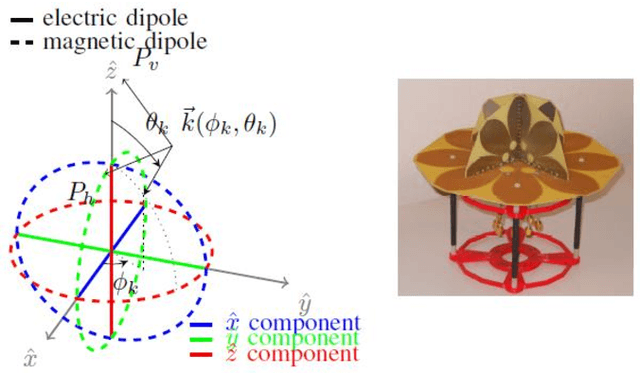
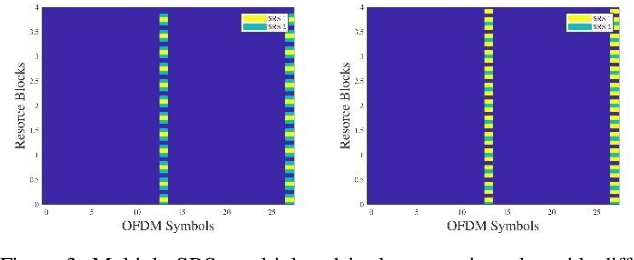
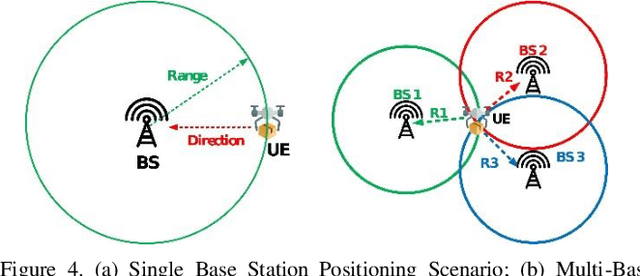
Abstract:This paper explores an integrated approach for improved sensing and positioning with applications in air traffic management (ATM) and in the Advanced Surface Movement Guidance and Control System (A-SMGCS). The integrated approach includes the synergy of 3D Vector Antenna with the novel time-of-arrival and angle-of-arrival estimate methods for accurate positioning, combining the sensing on the sub-6GHz and mmWave spectrum for the enhanced non-cooperative surveillance. For the positioning scope, both uplink and downlink 5G reference signals are investigated and their performance is evaluated. For the non-cooperative sensing scope, a novel 5G-signal-based imaging function is proposed and verified with realistic airport radio-propagation modelling and the AI-based targets tracking-and-motion recognition are investigated. The 5G-based imaging and mmWave radar based detection can be potentially fused to enhance surveillance in the airport. The work is being done within the European-funded project NewSense and it delves into the 5G, Vector Antennas, and mmWave capabilities for future ATM solutions.
Towards Ubiquitous Indoor Positioning: Comparing Systems across Heterogeneous Datasets
Sep 20, 2021



Abstract:The evaluation of Indoor Positioning Systems (IPS) mostly relies on local deployments in the researchers' or partners' facilities. The complexity of preparing comprehensive experiments, collecting data, and considering multiple scenarios usually limits the evaluation area and, therefore, the assessment of the proposed systems. The requirements and features of controlled experiments cannot be generalized since the use of the same sensors or anchors density cannot be guaranteed. The dawn of datasets is pushing IPS evaluation to a similar level as machine-learning models, where new proposals are evaluated over many heterogeneous datasets. This paper proposes a way to evaluate IPSs in multiple scenarios, that is validated with three use cases. The results prove that the proposed aggregation of the evaluation metric values is a useful tool for high-level comparison of IPSs.
Converging Radar and Communications in the Superposition Transmission
Aug 24, 2021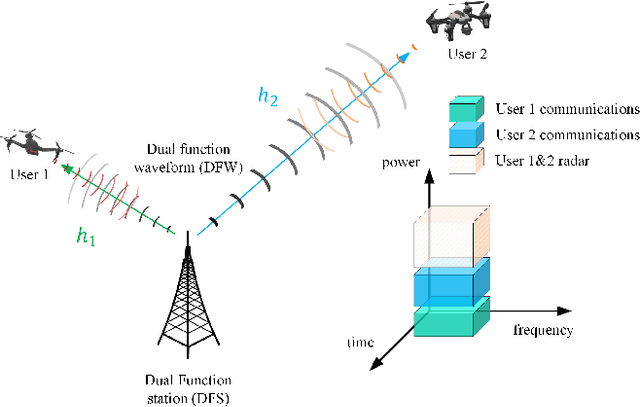
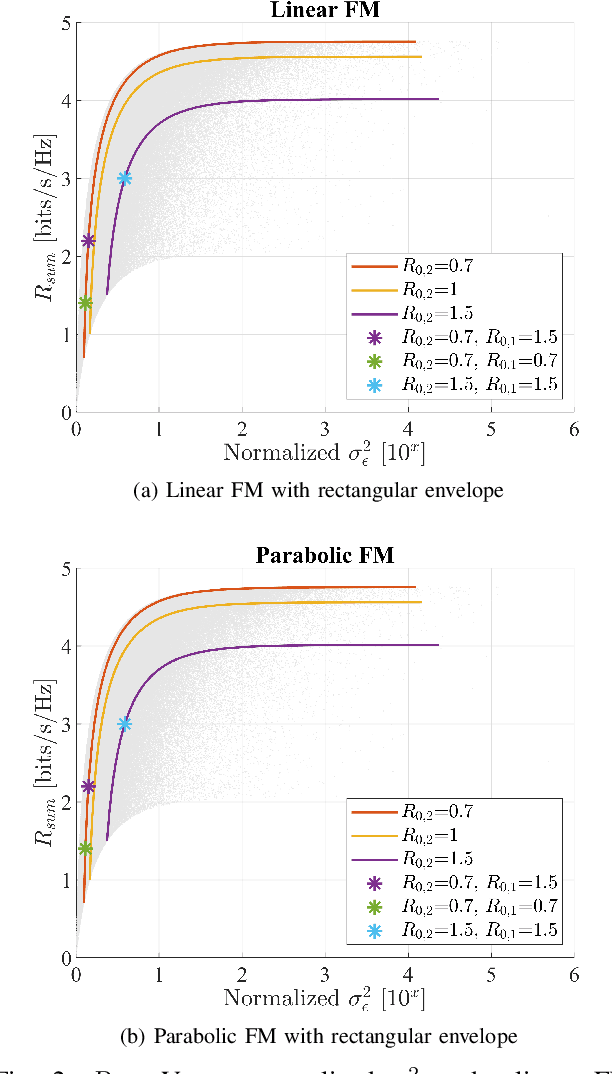
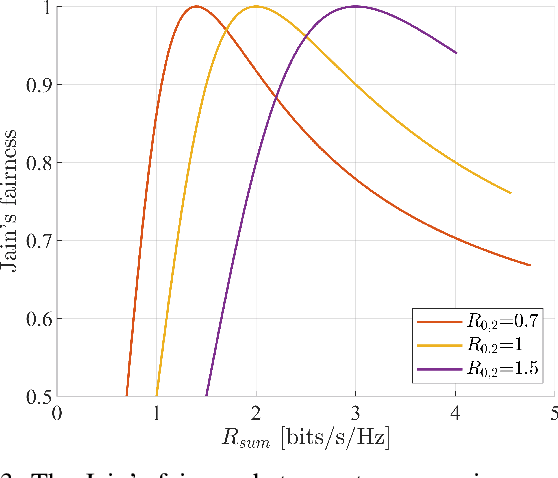
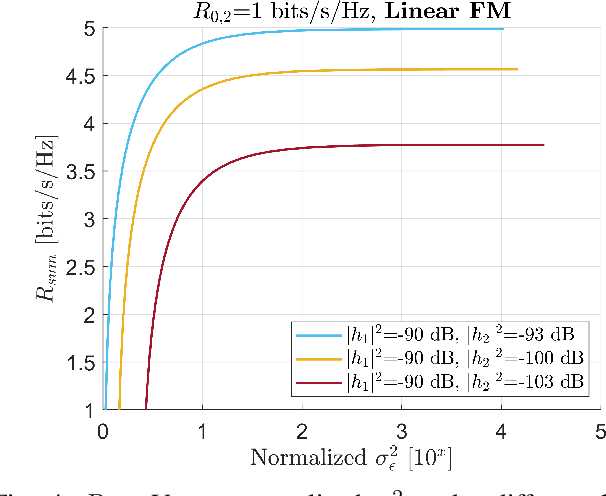
Abstract:This paper proposes a superposition transmission scheme for the future Radio Frequency (RF) convergence applications. The scheme is discussed under the assumption of a mono-static broadcasting channel topology. Under communications quality-of-service (QoS) constraints, the joint performance region of communications sum rate and radar estimation error variance is studied. Two radar signal waveforms, namely linear FM and parabolic FM, are used to investigate how signal shapes may influence the estimation accuracy. Both waveforms are generated with rectangular envelope. In the end, a numerical analysis is applied, which concludes that a moderate communications QoS promises a good communications fairness while with the limited radar performance degradation.
Joint Positioning and Tracking via NR Sidelink in 5G-Empowered Industrial IoT
Jan 15, 2021



Abstract:The fifth generation (5G) mobile networks with enhanced connectivity and positioning capabilities play an increasingly important role in the development of autonomous and other advanced industrial systems. In this article, we address the prospects of 5G New Radio (NR) sidelink based ad-hoc networks and their applicability for increasing the situational awareness, in terms of continuous tracking of moving connected machines and vehicles, in industrial systems. For increased system flexibility and fast deployments, we assume that the locations of the so-called anchor nodes are unknown, and describe an extended Kalman filter-based joint positioning and tracking framework in which the locations of both the anchor nodes and the target nodes can be estimated simultaneously. We assess and demonstrate the achievable 3D positioning and tracking performance in the context of a realistic industrial warehouse facility, through extensive ray-tracing based evaluations at the 26 GHz NR band. Our findings show that when both angle-based and time-based measurements are utilized, reaching sub-1 meter accuracy is realistic and that the system is also relatively robust against different node geometries. Finally, several research challenges towards achieving robust, high-performance and cost-efficient positioning solutions are outlined and discussed, identifying various potential directions for future work.
Recommendation System-based Upper Confidence Bound for Online Advertising
Sep 09, 2019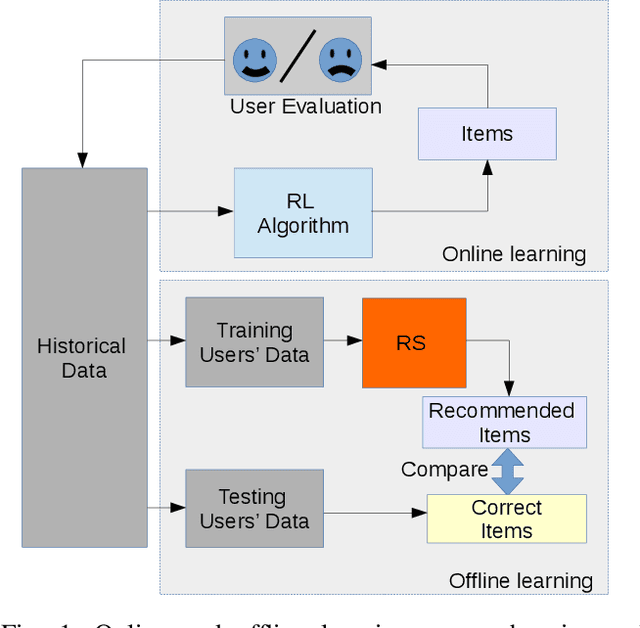
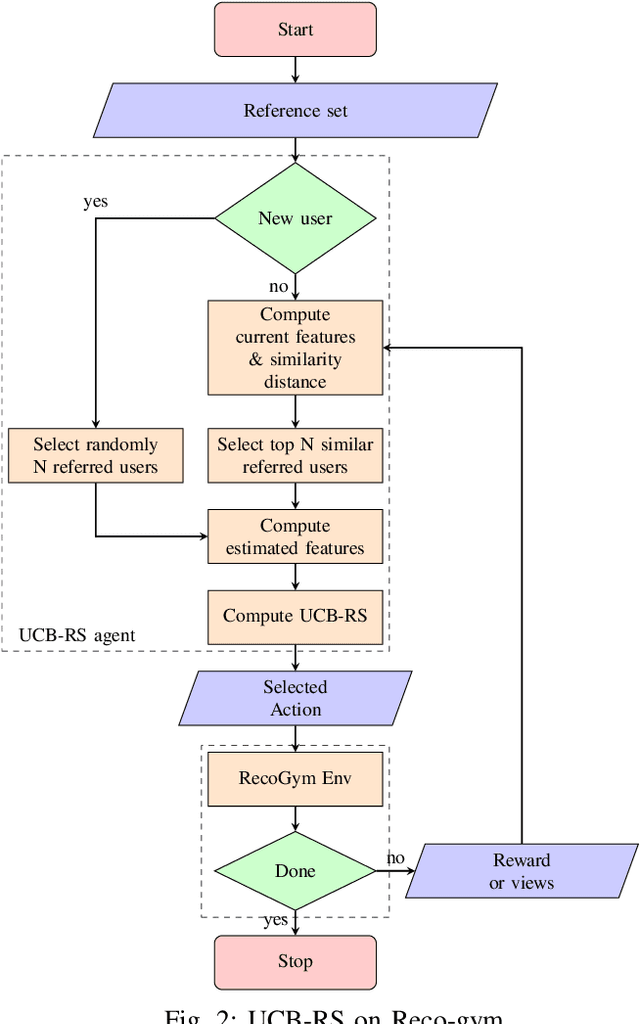
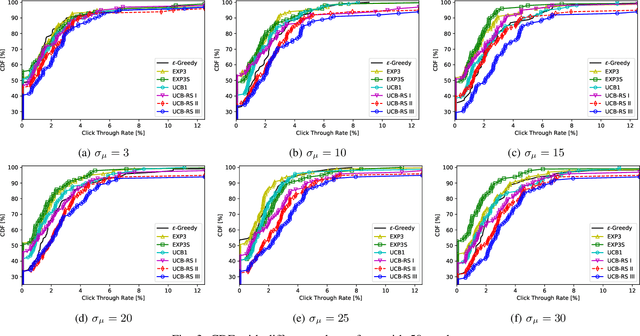
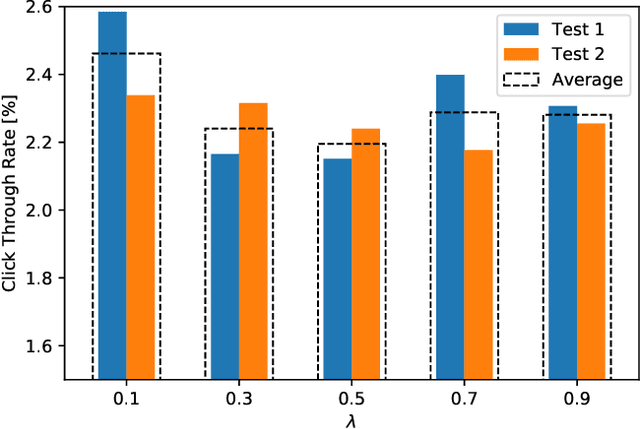
Abstract:In this paper, the method UCB-RS, which resorts to recommendation system (RS) for enhancing the upper-confidence bound algorithm UCB, is presented. The proposed method is used for dealing with non-stationary and large-state spaces multi-armed bandit problems. The proposed method has been targeted to the problem of the product recommendation in the online advertising. Through extensive testing with RecoGym, an OpenAI Gym-based reinforcement learning environment for the product recommendation in online advertising, the proposed method outperforms the widespread reinforcement learning schemes such as $\epsilon$-Greedy, Upper Confidence (UCB1) and Exponential Weights for Exploration and Exploitation (EXP3).
 Add to Chrome
Add to Chrome Add to Firefox
Add to Firefox Add to Edge
Add to Edge